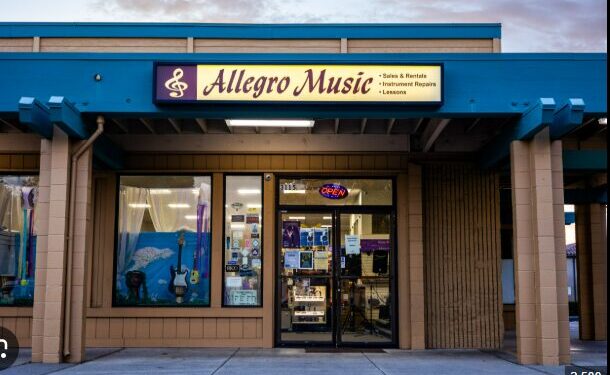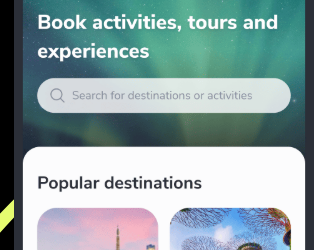In a world where the music industry is constantly evolving, tools like Allegro—powerful music notation software—have redefined how musicians compose, arrange, and produce their work. Whether you’re a composer orchestrating symphonies or a music educator preparing lesson plans, Allegro’s suite of features provides an intuitive and professional environment for musical creativity.
But what really makes Allegro stand out is its impact on real artists. From budding musicians to seasoned professionals, Allegro has helped transform creative workflows and bring musical visions to life. Here, we highlight a series of compelling success stories from musicians who revolutionized their careers with Allegro at the helm.
1. From Garage Band to Chamber Ensemble: The Rise of Sofia Martínez
When Sofia Martínez, a classically trained pianist and self-taught composer from Buenos Aires, decided to form her own chamber ensemble, she faced the challenge of scoring music that balanced complexity with clarity. Juggling limited resources and tight schedules, she turned to Allegro to streamline her creative process.
“I used to spend hours manually scoring pieces,” Sofia recalls. “With Allegro, I could not only notate faster but also experiment with different instrumentations on the fly.”
Allegro’s powerful MIDI input and playback features allowed her to test ideas in real time, making revisions far more efficient. Her ensemble’s debut concert, Noche de Invierno, received widespread acclaim, with critics praising the intricate layering of strings and woodwinds—all of which were first orchestrated inside Allegro.
Today, Sofia teaches masterclasses in composition and includes Allegro in her curriculum as an essential tool for the next generation of composers.
2. Jazz Revival: Marcus Lee’s Journey from Performer to Arranger
For Marcus Lee, a New Orleans jazz saxophonist with a flair for improvisation, notation was always secondary—until he started arranging pieces for his newly formed quintet. Transitioning from spontaneous solos to structured arrangements was a steep learning curve, but Allegro made it feel natural.
“Allegro didn’t just help me write down music—it helped me hear my arrangements come to life before the band even played them,” Marcus says.
He used Allegro’s jazz-specific symbols and swing feel settings to create authentic lead sheets and full ensemble charts. The playback engine even allowed him to tweak voicings and harmonies before printing a single page.
His quintet now tours across the U.S., performing original works that began life in Allegro’s interface. Marcus credits the software with helping him bridge the gap between the spontaneity of live performance and the structure of composed music.

3. Teaching with Tech: Emily Wang’s Digital Classroom Revolution
In the heart of Toronto, music teacher Emily Wang found herself struggling to keep her high school students engaged in traditional theory lessons. Enter Allegro. Integrating the software into her classroom not only boosted student participation but also allowed Emily to reimagine music education.
“The moment students realized they could write their own compositions and hear them instantly, everything changed,” she explains.
Emily uses Allegro to assign composition projects, theory exercises, and collaborative scores. With features like part extraction and real-time playback, students can instantly see and hear how different instruments interact, turning abstract concepts into tangible sounds.
Her innovative curriculum caught the attention of the local school board, and she now leads professional development workshops for teachers integrating notation software into the classroom.
4. Film Scoring Made Simple: Raj Mehta’s Cinematic Breakthrough
Raj Mehta always dreamed of composing for film. But after years of freelancing on small indie projects, he found himself limited by clunky notation software and inconsistent workflows. That changed when a colleague recommended Allegro.
“Allegro gave me a workflow that finally matched my pace and vision,” Raj says.
He particularly praised Allegro’s synchronization with video and its intuitive cue placement features, which allowed him to score scenes with frame-level accuracy. The ability to switch seamlessly between piano sketches and full orchestration meant he could meet tight production deadlines without compromising on quality.
Raj’s work recently featured in an award-winning short film at the Toronto International Film Festival, and he’s currently working on a feature-length score—his largest project yet—all created in Allegro.
5. Indie Pop with a Professional Edge: The Story of Luna and the Echo
Luna and the Echo, an indie-pop duo from Portland, were known for their ethereal vocals and synth-heavy soundscapes. But when they decided to incorporate live strings into their performances, they faced a new challenge: writing arrangements that could blend classical instruments with electronic elements.
Allegro proved to be the perfect bridge.
“We didn’t know how to notate for strings, but Allegro’s templates and virtual instrument previews made it easy to learn,” says Luna, the band’s vocalist and producer.
With built-in guides, visual cues, and notation playback, they created lush arrangements that added emotional depth to their sound. Their latest EP, Starlight Motel, features live string quartets recorded using Allegro scores—and has been streamed over a million times.
They now use Allegro regularly to prototype and produce arrangements, blurring the line between studio and symphony.
6. From Military Service to Musical Legacy: Captain Brian O’Connor
After serving two decades as a bandleader in the U.S. Army, Captain Brian O’Connor transitioned into civilian life with a mission to preserve and modernize military band music. He chose Allegro to archive and arrange the extensive library of scores he had accumulated.
“Allegro helped me digitize years of handwritten music and create modern arrangements accessible to today’s musicians,” he explains.
He utilized Allegro’s scanning and transcription tools to convert paper scores into editable formats, often improving instrumentation to fit contemporary ensembles. Today, his non-profit organization provides free band arrangements to schools and community orchestras, with Allegro as the backbone of every score.
7. Global Collaboration: The Virtual Orchestra Project
One of the most ambitious Allegro-powered initiatives is the Virtual Orchestra Project—a global collaboration of over 50 musicians from 12 countries. Spearheaded by Dutch conductor Elise van Dijk, the project aimed to produce symphonic music entirely remotely during the pandemic.
“We needed software that could handle high-quality notation, share files easily, and offer reliable playback,” Elise says. “Allegro was the obvious choice.”
Each musician received personalized parts created in Allegro, along with synchronized click tracks and rehearsal notes. Despite being continents apart, the orchestra released three virtual concerts that garnered hundreds of thousands of views on YouTube.
The success of the project proved that Allegro could not only empower individual creators but also unite communities around the world through music.

Why Allegro Stands Out in These Stories
Across all these stories, certain Allegro features consistently made a difference:
- Real-Time Playback: Musicians could instantly hear their work, allowing for immediate feedback and refinement.
- Intuitive Notation Tools: Whether composing for jazz combos or symphony orchestras, Allegro’s customizable toolset adapts to the user’s needs.
- Flexible Exporting: Musicians easily created professional-quality PDFs, MIDI files, and XML exports for performance, publication, or collaboration.
- Educational Integration: Teachers and students benefited from interactive learning tools and flexible score management.
- Scalability: Whether working on solo pieces or full-scale orchestral projects, Allegro handled complexity without sacrificing performance.
Final Thoughts: The Power of the Right Tools
While talent and dedication remain the cornerstones of musical success, the right tools can dramatically expand a musician’s creative reach. Allegro has proven time and again to be more than just notation software—it’s a platform for transformation.
From jazz arrangers and pop producers to educators and military bandleaders, Allegro empowers users to turn their musical ideas into professional, shareable, and impactful works of art. These real-life success stories are just the beginning. As technology continues to evolve, so too will the ways musicians create and connect through Allegro.
Whether you’re just starting out or already deep into your musical journey, consider this your cue to explore the possibilities that Allegro offers. You might just become the next success story waiting to be written.















